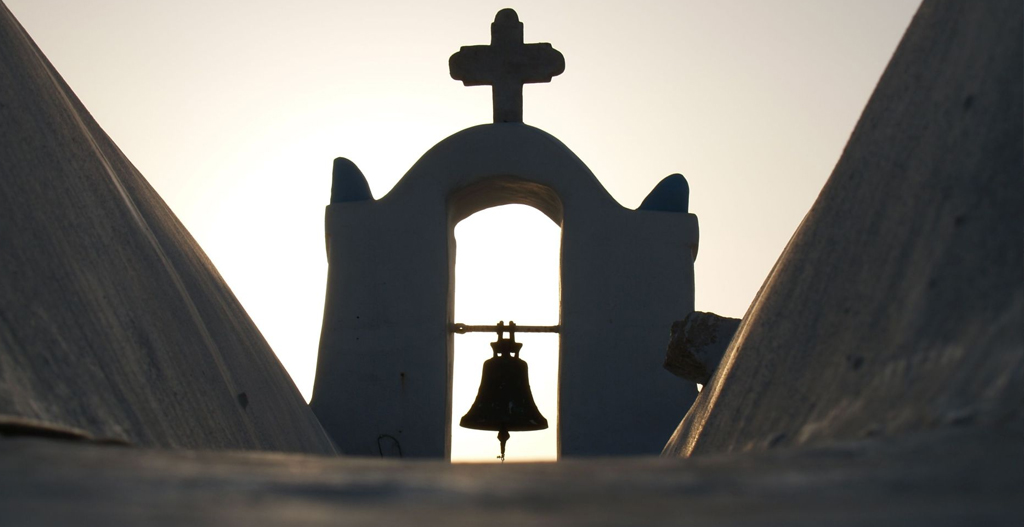DONOUSSA
A traditional Cycladic island full of interspersed settlements. It is the northest island of the small Cyclades. It is 11,5 miles away from Amorgos and 9 miles away from Naxos. It occupies 13,48 square Kilometres. The main occupation of the inhabitants is fishing, cattle - raising and the last few years tourism.

An island full of history
"Virgilios" call it "Viriden" because of its luxuriant vegetation and green marble. In the 19th century foreign sailors called it "Stenosa" or "Spinosa". The island has been inhabited since the Geometric period as the ancient monuments reveal. There are ancient findings in the archaeological museum of Naxos. You will hear people talking about pirates who hid in its bays in the Midle Ages. Further more, a myth saysthat when Dionysius saw Ariadne in Naxos, he fell in love with her, abducted her and brought her to Donoussa.
SETTLEMENTS
Stavros or Kampos: This is the largest settlement where the main port of the island is situated. Wander around the picturesque alleys of the settlement and walk along the coastal road which connects the port to the settlement. The church of Stavros in the centre of the village is of excellent aesthetic value as is the Makaron yard, which is marble coated. The main beach of the village is considered one of the most beautiful in the Cyclades. Climbing to visit the church of Virgin Mary and Agios Ioannis is a must. From there you can enjoy an impressive view of the Aegean. At Stavros, there are restaurants where you can taste traditional Cycladic cooking, bars to have fun at night and shops with souvenirs and handmade crafts as well as biological products. There is also a mini market, a bakery, a grocery store and a travel agency. At Stavros, you will find the majority of the tourist accommodation of the island, a Civil Service Bureau, a post office and an outpatient health centre.
Mesaria: It is a mountain settlement which is divided into the Upper and Lower Mesaria. We recommend following the path which starts from Kedros.
Mersini: It is the second biggest settlement of the island. It is built on a cliff with houses in traditional Cycladic architecture and a breathtaking view. The few inhabitants are occupied mainly with agriculture and stock breeding. At Mersini you can find one of the most scenic spots of the island, namely a spring of the same name next to a sycamore tree. From Mersini you can follow a path of exceptional beauty which leads to the beaches of Livadi and Fikiou. In the village you can find two taverns with traditional food.
Kalotaritisa: This is probably the most picturesque settlement of Donousa. It is situated in an isolated spot on the North side of the island and it is built in the shade of mountain Papa, the highest peak of the island. The main road ends there. We recommend following the scenic path from Stavros and walk all the way to the gorgeous beach of Tripiti after going through the settlement. At the cove there are two more beaches: Vlihos and Sapounohoma.
NETWORK OF PATHWAYS
Donousa is one of the few islands in the Cyclades suitable for tourists who enjoy hiking throughout the year due to the detailed signage of its pathways which have a total length of 9.2 kilometers. The network of the paths gives access to all the villages of the island as well as to places worth visiting like springs, bays and points of agricultural or fishing interest such as mills, fields, beaches and natural harbours.
CHURCHES
All the churches of the island are very picturesque. The Holly Cross in Kambos which was consecrated in 1902. Virgin Mary on the top of the mountain next to Kambos has got a spectacular view of the sunset just as Agia Sofia in Mersini. Finally, you will never remain unmoved when you visit Saint George in Kalotaritissa.

AREAS OF INTEREST
Vathi Limenari: A settlement of the Geometrical period ( 900 BC – 700 BC ) built at on a steep cape with deep anchoring on the southeastern side of Donousa which is not affected by north winds. Accessible only by sea and a path without signs.
Limni – Cape Aspros Kavos (White Cordage): An enclosed bay with a small beach where ships used to anchor in the past. Access is possible through a signed path which leads to Cape Aspros which offers a landscape of out of this world beauty that you shouldn’t miss.
Fokofolia (Nest of Seals)– Caves of the Wall: Caves accessible only by sea on the boat ‘Donousa Magissa’. There you can enjoy waters in different shades of blue. Fokofolia is considered one of the last places where the seals Monachus Monachus seek shelter while in the Cave of the Wall you can admire the wonderful stalactites.
Mersini Spring: An oasis under the enormous sycamore tree which is watered all year round by the spring.
Peak of Papa: It is the highest peak of Donousa and it is accessible on foot through the signed path to Kalotaritsa. It is advisable to set off before dawn so as to enjoy a magical sunrise as the sun emerges through the sea. The view of the Aegean from the peak is stunning.
Kato Milos: An old mill where the inhabitants of the island used to grind. It is accessible through a signed path that starts from Kedros.


